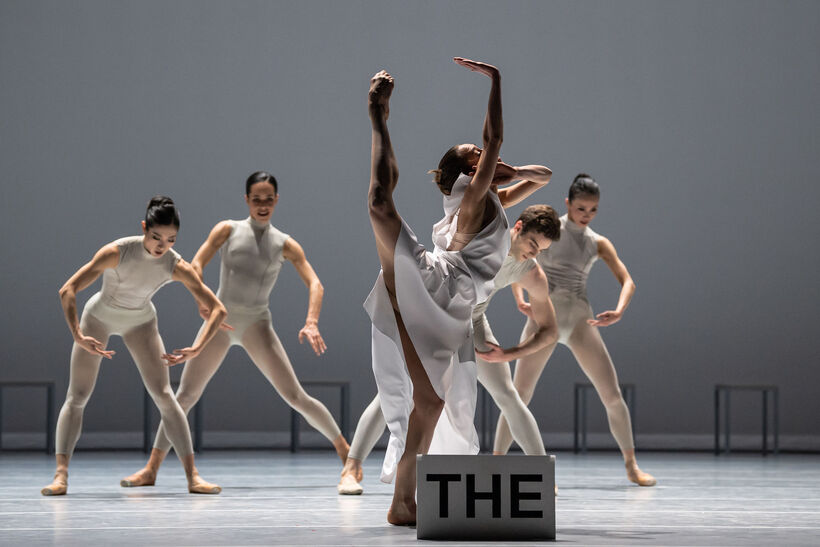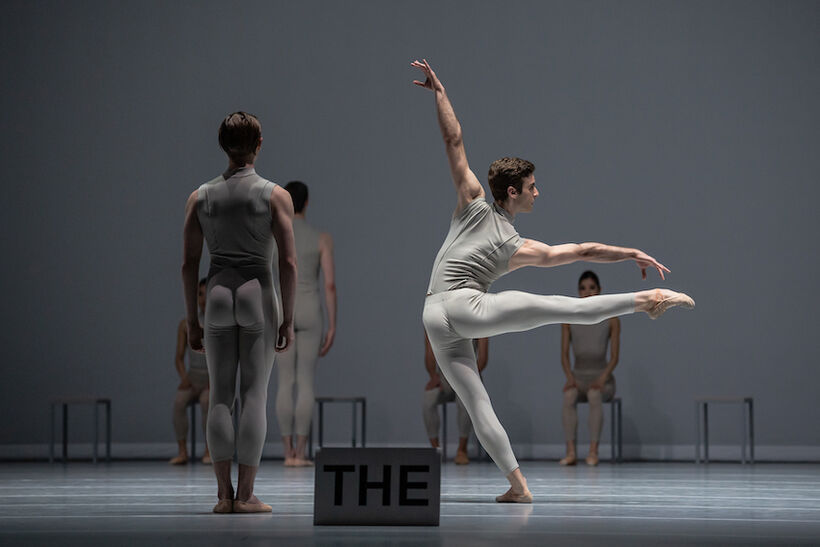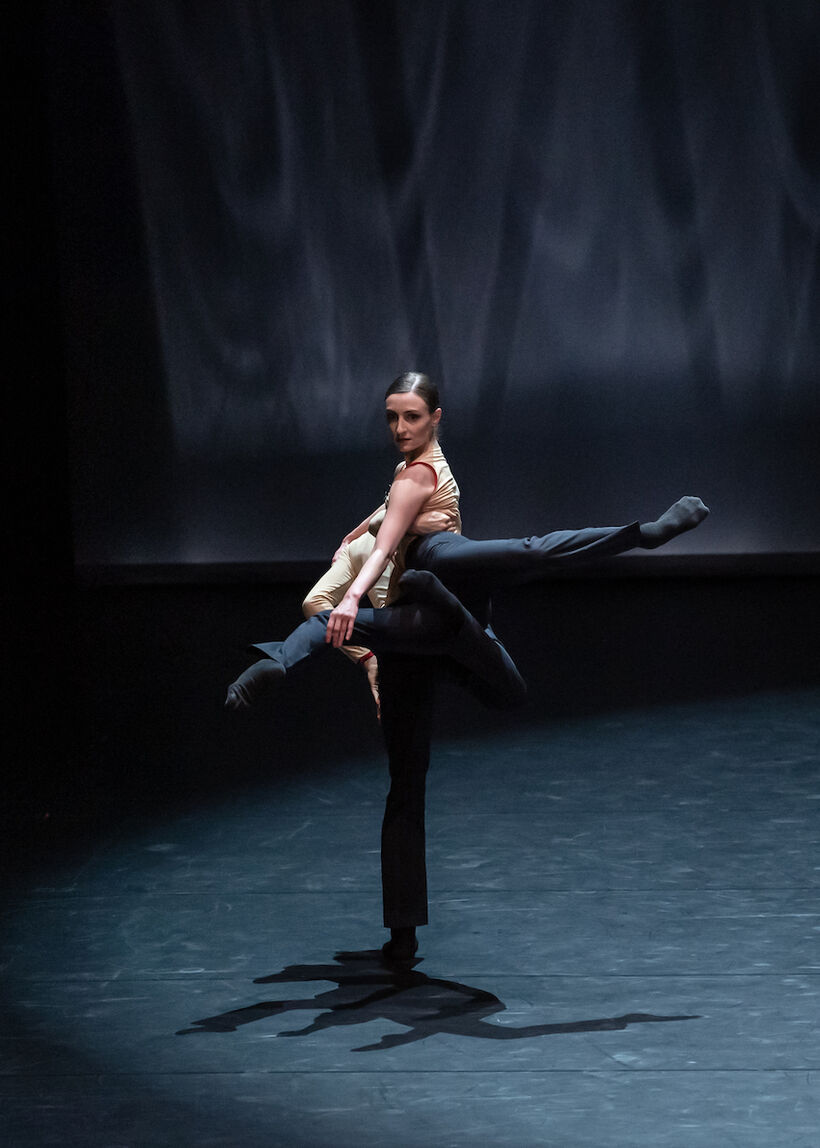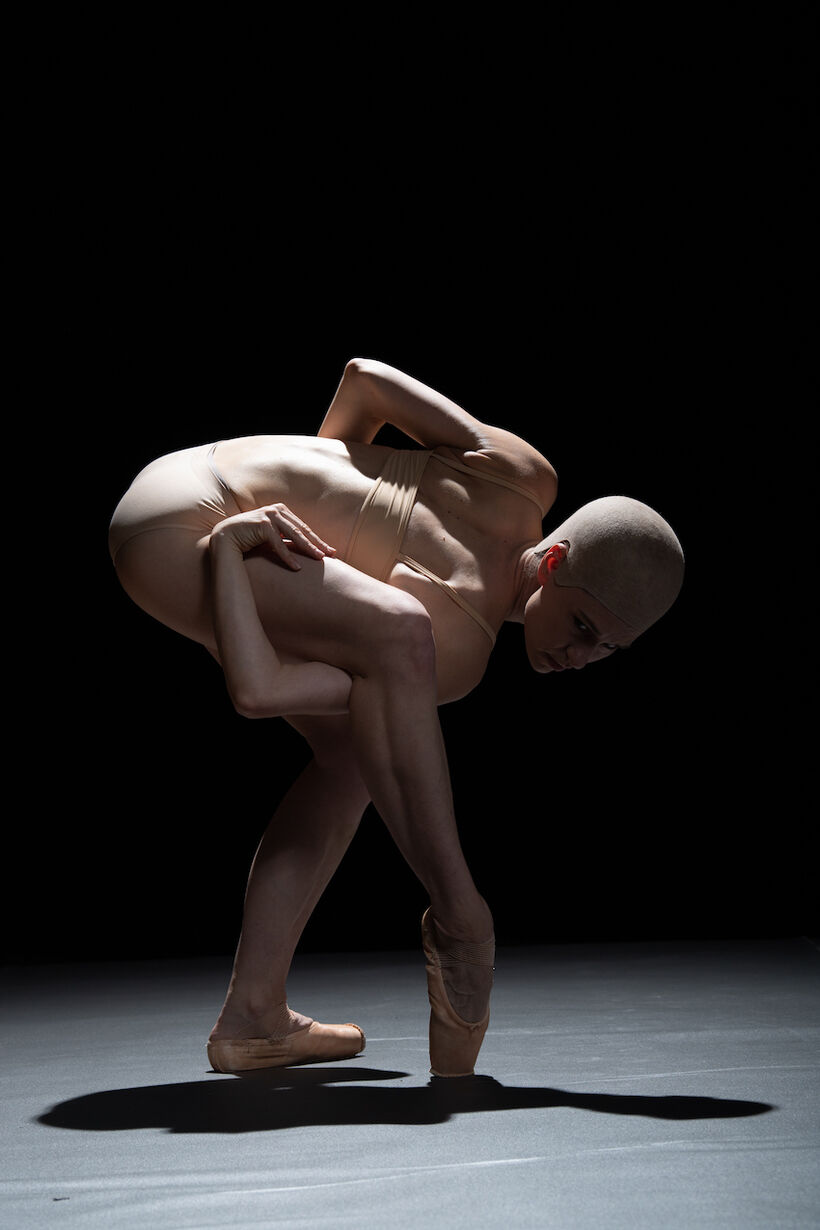Forsythe/Clug/McGregor – Movement extremes and cloning
The Czech National Ballet has presented a triptych of works by world renowned contemporary choreographers William Forsythe, Edward Clug and Wayne McGregor. After the somewhat decadent production of The Sleeping Beauty staged by Marcia Haydée, the new triple bill feels like a breath of fresh air into the rigid contemporary ballet programming of the company’s director Filip Barankiewicz.
Without emotions
Although none of the three works has been created directly for the Prague ballet ensemble, as all of them have already been performed on big stages world-wide, it is definitely a challenge for the dancers to explore and handle the extremely difficult classical ballet technique and absolutely unique style of the choreographic magician and innovator William Forsythe.
There is no need to further present this leading American dance maker, who spent his entire career working in Europe. He started in the Stuttgart Ballet and for many years, he headed his own company, the Ballet Frankfurt, for which he created his landmark and ground-breaking pieces. For more than ten years, his ensemble has been based in Dresden.
The present title The Second Detail (premiered by the National Ballet of Canada in Toronto in 1991) is a follow-up to the Prague version and the company’s experience with Forsythe’s In the Middle, Somewhat Elevated, presented at the State Opera shortly before its reconstruction in 2012 as part of a dance evening called Americana III.
Clad in monochromatic unitards, a group of performers is dancing on a clean light stage. They display finely tuned movement variations and technical features, and execute them (in line with the choreographer’s vision) without emotions, only beaming out specific energy. Each dancer is a solitaire, and together they flow across the stage in groups, rows and diverse structured clusters. Not even in duets and solos do we find a story or a hint of emotion. It was Forsythe’s intention, especially in the 1990’s, when he focused purely on the ballet technique that he developed to the extreme, letting his signature style resonate with the audience.
To some degree, he built on George Balanchine’s work and he also partially adopted the estranging, cold-blood style of the American genius Merce Cunningham (although the physiognomy of his dancers and their dispositions and skills are significantly different).
The audience cannot but wonder what the composition is about and why the dancers exhibit themselves in such a way. You try to catch the slightest movement gags, you watch the extravagancy of hyperextended limbs, extreme and unusual gymnastics positions, the unconcealed lordosis of the spine and its exaggerated bending, and the sharp, almost “shooting out” arms. - all this happening at a crazy fast pace, to the music by Thom Willems. The monotonous stream of movements and the white greyness of costumes and sets is “pierced” by the final short solo (danced in a specific tempo) of a ballerina wearing an original snow-white costume by Issey Miyake.
William Forsythe’s works resemble cries coming from a distant galaxy. Thanks to the Tanec Praha Festival, Czech dance-goers can compare the choreography not only with this year’s guest performance of Forsythe’s A Quiet Evening of Dance (September 2021 in the Karlín Music Theatre) but also with the Ballet Frankfurt’s previous guest performance of One Flat Thing, reproduced.
Sharp and imaginative
The charismatic choreographer Edward Clug belongs to the generation of contemporary dance creators whose works have made it to the world’s stage. His professional career began in Slovenia, where he still works for the Slovene National Theatre Maribor ballet company, for which he has created many interesting pieces (e.g. an exquisite take on Rite of Spring to music by Igor Stravinsky). He has guested several times in NDT (Netherlands), Stuttgart Ballet, the Wiener Staatsoper ballet company, Zurich etc. The Brno National Theatre Ballet has included his Radio and Juliet (music by the legendary Radiohead) into its repertory. At the 2019 Brno Dance festival, Clug presented his Peer Gynt and Hora.
His Handman, now programmed by the National Theatre, was created in Haag for the NDT junior company (NDT 2) in 2016. Set to the dynamic music by the Slovenian composer Milko Lazar (Piano and Drums) and Justi Hurwitz, the ballet is a sophisticated etude for five male and four female dancers. The choreographer uses funny hand and arm gestures, and fierce partnering in duets and group scenes. Handman is a well-structured composition set in a open and nicely lit space, fully respecting the music accompaniment. The premiere cast included the great Alice Petit, Magdalena Matějková and Anna Novotná and the outstanding and always funny Mathias Deneux.
Live with Berg Orchestra
The final part of the triple bill is EDEN/EDEN by the prominent British choreographer Wayne McGregor, who has collected many accolades and become the Resident Choreographer at the Royal Ballet in London. It is not without interest that McGregor did not receive any formal classical ballet training and yet he made into the top ranks. He has grown into a original dance creator and gained international renown. Boasting such a wide repertoire of dance works, it is hard to understand why he chose his fifteen-year-old piece EDEN/EDEN for the National Theatre. I do not think it was a lucky choice. In my opinion, it is the least comprehensible of McGregor’s early works for the Random Dance and the Company Wayne McGregor. However, it is surely a challenging choreography, featuring projections, texts and vocals from a score called Three Tales by the outstanding minimalist composer Steve Reich and Beryl Korot.
It is great that Reich’s music was played live by the Berg Orchestra conducted by Peter Vrábel. The sound added a whole new dimension to the piece, especially for the fans of this unique ensemble.
McGregor was inspired by the third part called Dolly from the above mentioned video opera.
The sound of the voice-overs was modified and hard to understand, same as the projection. Certainly, the theme stems from the principles of cloning and the text was thus an extract from a sheep cloning procedure.
Initially, dancers appeared on stage all bald and costumed as if naked, they probably embodied birth and reproduction. They came out of a stage trap and developed various kinds of relationships.
The movement vocabulary is truly original, running from fluid to sharply interrupted sequences, and it forms some odd and unusual surrealist positions. Dancers execute technical elements and rotations like in classical ballet variations: fouettés and multiple pirouettes on the spot. As if the choreographer wanted to show what performers were capable of doing and maybe he kept “cloning” the steps until he reached a series of hectic wild repetitions.
All in all, it is good to see Wayne McGregor’s ballet feature the Czech National Ballet’s repertory. It only proves that the company has achieved the highest technical level and can compete with top European ensembles.
Written from the premiere held on 14 Oct 2021, at the State Opera.
Forsythe / Clug / McGregor
The Second Detail
Choreography: William Forsythe
Music: Thom Willems
Costumes: Yumiko Takeshima a Issey Miyake
Set and lighting design: William Forsythe
Set and lighting design – supervize: Tanja Rühl
Assistant choreographer: Noah Gelber
Handman
Choreography: Edward Clug
Music: Milko Lazar – Piano and Drums (2015), for Nederlands Dans Theater, Justin Hurwitz – Dismissed; Drum & Drone from Whiplash
Sets and costumes: Edward Clug
Lighting design: Tom Visser
Assistant choreographer: Aya Misaki
EDEN / EDEN
Choreography: Wayne McGregor
Music: Steve Reich
Sets: Wayne McGregor
Sets – supervision: Catherine Smith
Costumes: Ursula Bombshell
Lighting design: Charles Balfour
Lighting collaboration: John-Paul Percox
Video design: Ravi Deepres
Visual effects: Luke Unsworth with the kind support of the University Of Central England, Research Lab
Staging: Catarina Carvalho, Antoine Vereecken
Orchestra: Orchestr Berg (conductor Peter Vrábel)
Překlad: Tereza Cigánková







